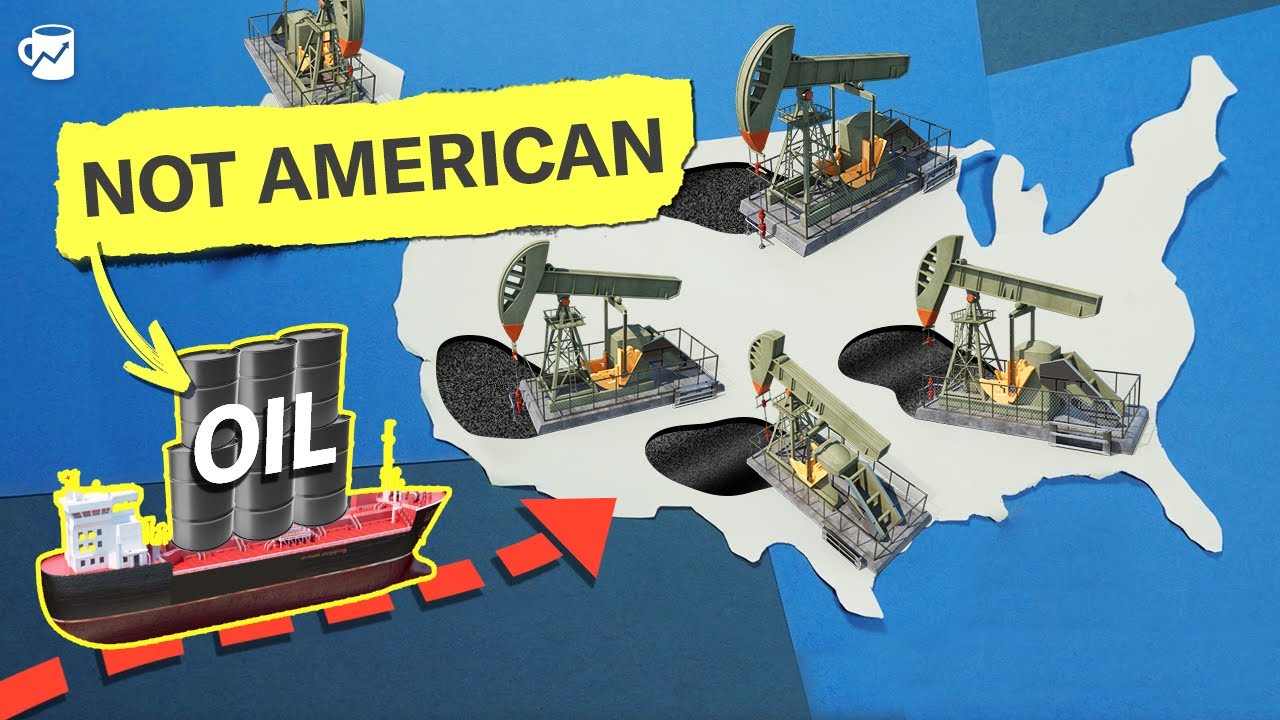Before seeing the video, let me guess - the oil that it produces is too light or too heavy for its own consumption.
After seeing the video, here’s a summary:
- Local oil deposits required different techniques to retrieve than the conventional techniques back then.
- There used to be a ban on oil exportation, nowadays lifted
- The oil being currently extracted is light oil, but the refineries were built for heavy oil
- It’s overall cheaper to exchange the light oil for heavy oil than to adapt the local refineries to use light oil.
- No new refineries are going to be built for environmental and political concerns.
So my guess was somewhat correct, but it’s more complicated.
I’m not too interested on what happens in those countries like USA, but I like the underlying chemistry, so here’s some further explanation:
Petroleum is mostly composed of a messy mixture of hydrocarbons. Some of them are light molecules, like butane (4 carbons); some reach, like 40 carbons, so they’re big molecules with high melting and boiling points. And plenty fall within that range.
Depending on the size of the molecule, it might be suited for one or another application, so it’s convenient to coarsely separate them. That’s done by fractional distillation; the name might sound fancy, but it boils down to “extract separately what boils at different temperatures”. The output of that separation is called a “fraction”, and it’s typically like this:
- 1~4 carbons: gas
- 5~10 carbons: petrol
- 11~13 carbons: kerosene
- 14~18 carbons: diesel
- 19~25 carbons: heavy oil
- 26~40 carbons: lubricating oil
- 41+: residuum
It’s actually messier than that; that number of carbons is for typical molecules in that fraction, not all of them. (For example, petrol has some molecules with 4, 11, or 12 carbons.) But look at the pattern: in general, lighter fractions are for stuff that has heavier consumption. In other words, lighter fractions are commercially more desirable.
And of course nature isn’t so convenient to give you just the right ratios as you want, you’ll typically get far more of the heavier fractions than you want, for any given barrel of petroleum. That’s industrially solved by a bunch of processes called “cracking”, that boil down to “see that big arse molecule? Crack it into smaller ones”.
What I said until now is a good chunk of what petroleum refineries do: first they separate the fractions of petroleum fractions, then they crack the heavier ones.
There’s a catch though: petroleum composition varies wildly. Some sources output lighter petroleum, with proportionally more light fractions; while some output a heavier petroleum, full of those useful-but-less-so fractions. And refineries are usually built for one or another type of petroleum, and it’s damn bloody expensive to convert a refinery for heavy petroleum into one for light petroleum or vice versa.
The video is about the consequences of that problem.
You transported me back into factorio where the oil processing becomes a major headache and balancing the different outputs can be a real nightmare.
I even installed a mod to give me a flare tower, because sometimes… Fuck it. I’m not doing any more balancing
Man, fuck oil production in Factorio.
Factorio oil processing is a pain in the butt. Surprisingly accurate.
It has been a long time since I played the game, but if I recall correctly my approach is to research coal liquefaction ASAP, and then have enough chem plants to crack all heavy into light, and all light into gas. Then use the pumps to set preferential consumption targets:
- gas - sulphur and plastic, in whatever order
- light - rocket fuel, then solid fuel, then cracking into gas
- heavy - coal liquefaction (backfeeding), then lubricant, then cracking into light
With a large enough supply of coal and water, this means that the oil processing will never stop due to a backlog of light or heavy. Only if there’s a backlog of gas, but my factories typically eat gas like there’s no tomorrow.
TLDR: most of the oil the US pumps up now, the US does not have refineries for it. So the export the oil to countries that do have the refineries
The refineries in the US import oil from countries that have the right type of oil.
The reason no refineries have been built in the US in 50 years as a combination of the cost of building in the United States, the regulatory uncertainty of fossil fuels in the United States,




